Volunteer creates an environment at Willamette Valley Vineyards for mason bees to thrive
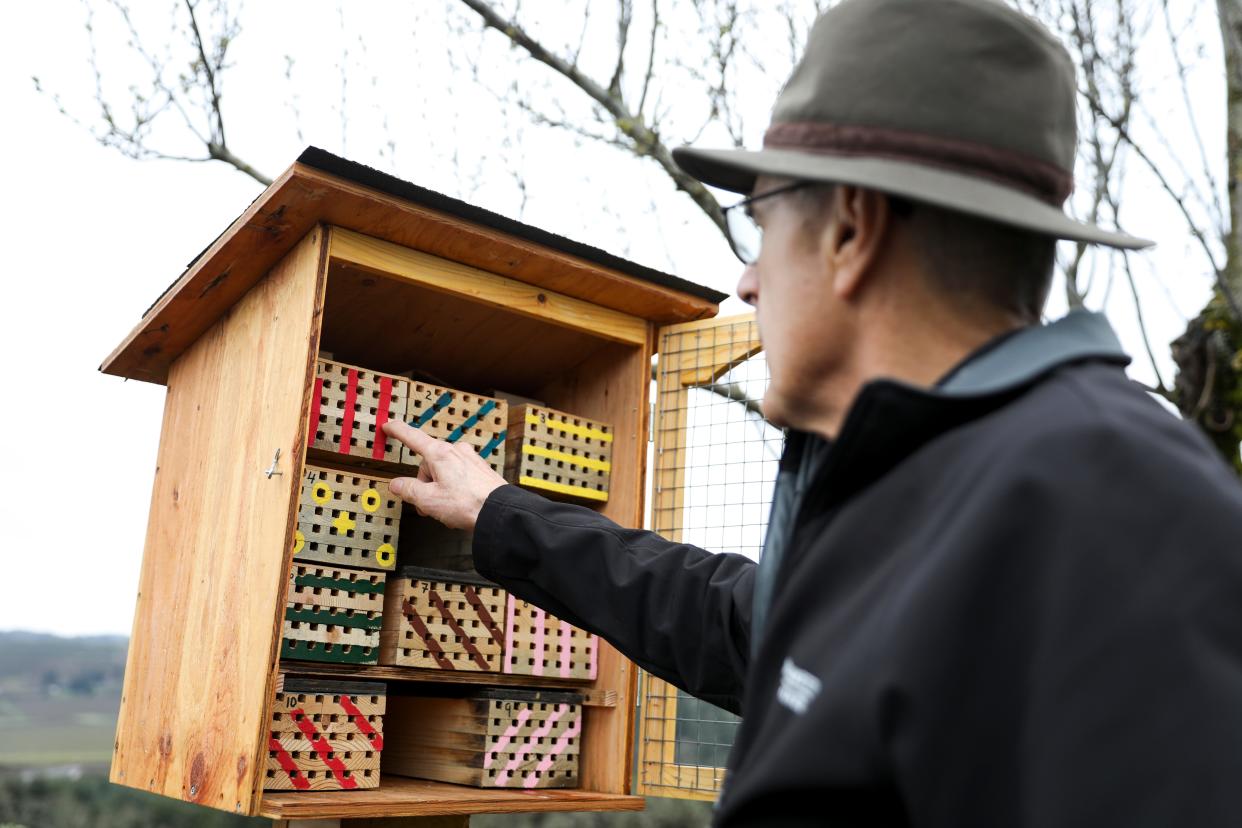
Inside the fortressed walls at Willamette Valley Vineyards’ main property in Turner, winemakers are busy fermenting grapes; hospitality staff are preparing tasting rooms and pouring wine; facilities coordinator Randy Hillyer is carrying his toolbox around to various jobs. The place buzzes with energy.
Outside, a much smaller workforce buzzes, literally, with one of nature’s most critical jobs: pollination.
Mason bees are, to enthusiasts like Stephen Paisley, the underappreciated underdog of the bee family.
Pollinators are critical members of any ecosystem. They help plants reproduce.
“You lose pollinators, you lose a large portion of your food source,” Paisley said on a recent morning at Willamette Valley Vineyard.
Which is why Paisley has dedicated his retired life to mason bees. The vineyard’s former electrician is now its resident volunteer beekeeper.
His job is to create an environment for the insects to thrive. He maintains bee houses at Willamette Valley Vineyards, one of several wineries to adopt “bee-friendly” wine practices. It hosts mason bees on its properties and offers chances for the public to meet the bees, and meet Paisley.
"That's our thing: we're stewards of the land," said marketing specialist Hunter Garcia.
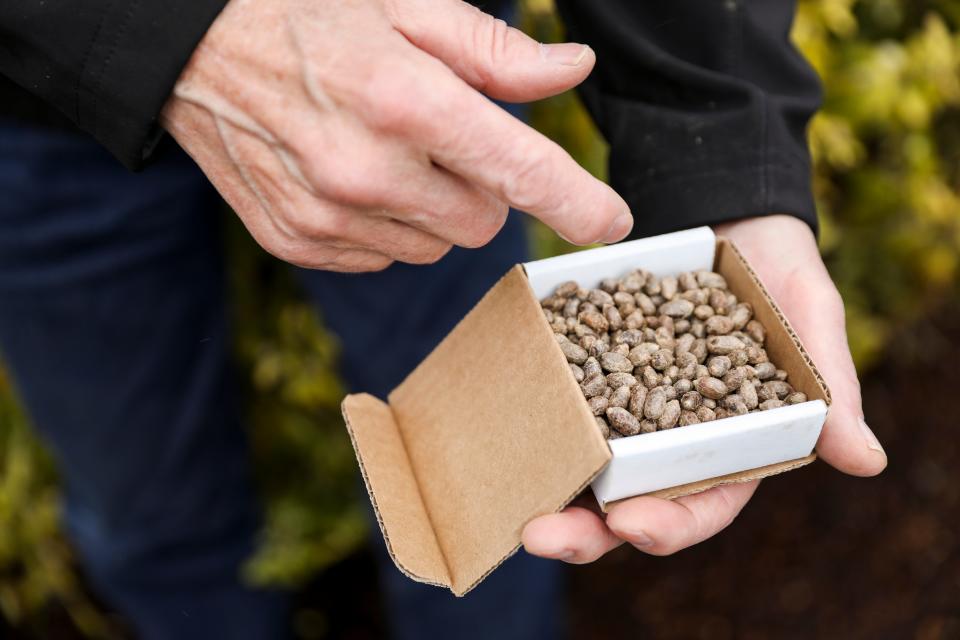
Worker bees
Mason bees are expert pollinators. They pollinate more efficiently than, say, their cousin the honeybee, because they start pollinating earlier in the year and they fly in a zig-zag pattern, rather than a straight line, which gives them further reach.
Vineyards like Willamette Valley are monocultural. They produce one crop, and to do it, they eliminate other food sources on which pollinators depends.
“When you put in a vineyard like this, you’ve removed a whole bunch of native plant life that is no longer available for the native pollinators,” Paisley said. “Look across the highway [at] all those vineyards. If we don’t put pollinators back in them, it is going to impact us.”
Grapes are self-pollinating. They don’t need bees; vineyards don’t need bees.
But bees need them. In the face of a changing climate and shrinking natural habitat, humans have become part of the insects’ ecosystems. People like Paisley, and places like Willamette Valley Vineyards, play a critical role in maintaining healthy bee populations. The bees feed here on flowers and bushes, all planted by human hands in a small garden just outside the vineyard's tasting room.
“It’s just good stewardship,” Paisley said.
Mason bees are among some 500 species of bees native to Oregon. Mason bees are dark, black or almost blue, and to an untrained eye might look more like a fly than a bee.
They're also friendlier than their striped relatives.
Mason bees are solitary. They don’t live in hives; they have nothing to protect but their own homes. As such, they’re among the most docile of bee species.
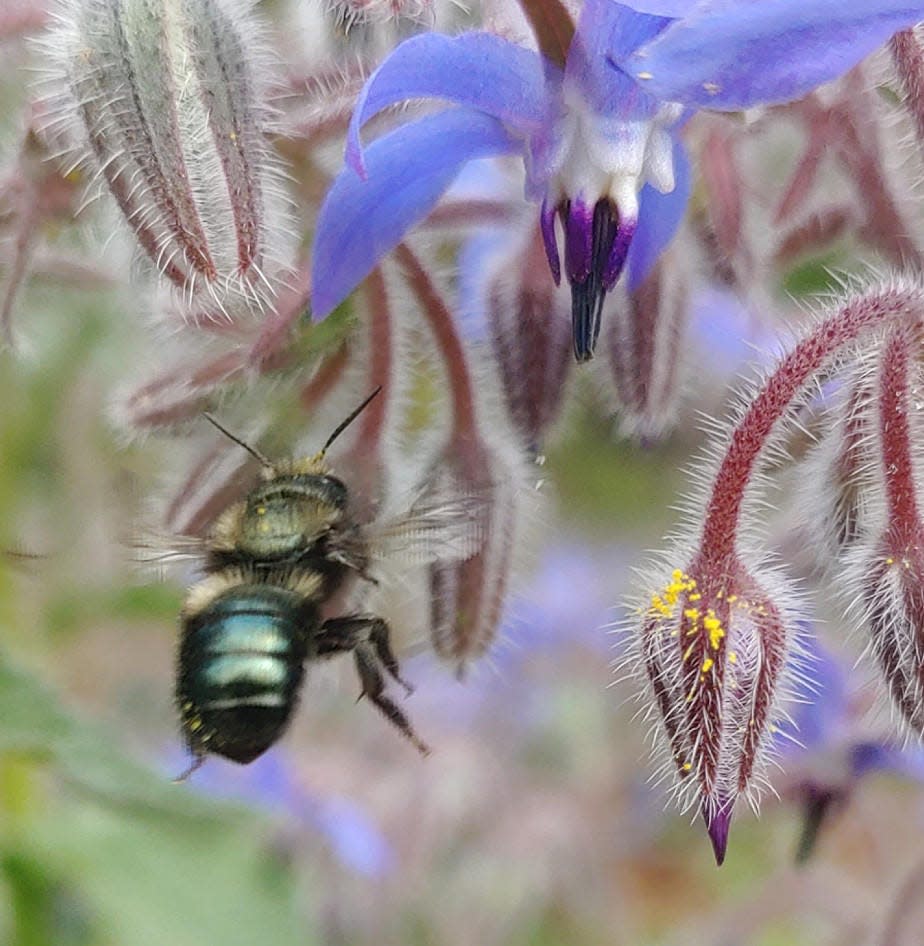
“I can go to a bee house… open the door, pull out a tray,” Paisley said. “Because they’re solitary, they’re not threatened. They’ll land on me.”
Mason bees are named for the distinct work they do. They’re builder bees. They construct homes out of mud and pollen, a web of tunnels and chambers hidden in crevices of stumps or trees.
At Willamette Valley Vineyards, most of the bees' labor happens within the walls of a wooden house, roughly the size of a shoe box, built by the vineyard’s “master woodcrafter” Joe Perez.
The garden on which the house sits is covered with bark dust – not conducive for an insect that depends on mud.
So Paisley helps with that, too. His job one spring morning is to assemble a platform covered on all sides by mesh wiring, through which woodchips cannot fit, but bees can. He’ll set it atop the little patch of mud he’s conserved for his bee friends.
Inside their man-made house, the bees can burrow and build safely using mud they collect from the outside.
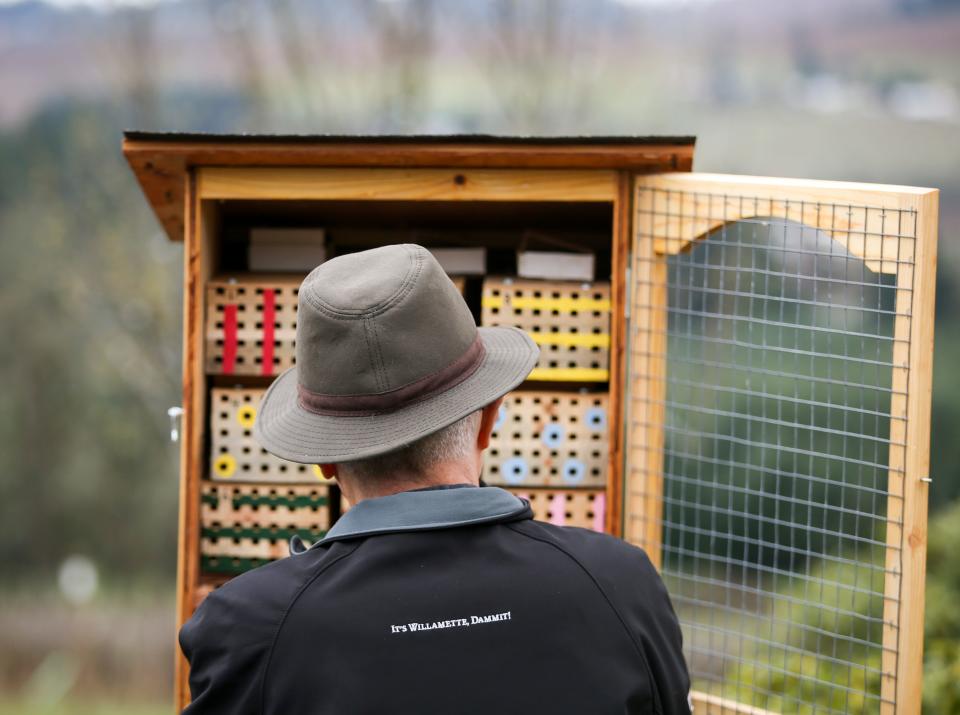
A different kind of buzz
Paisley worked as Willamette Valley Vineyard’s electrician for “20-some odd years,” he said. Electricity was his career.
But bees, it turns out, were his calling.
He met his first mason bee roughly eight years ago in Hillsboro. OSU’s master gardener Ron Spendal gave Paisley his own cocoons in exchange for helping clean trays.
“Next year, I watched these bees in my backyard,” Paisley said. “Every day, I’d go out there and watch.”
He fell in love with them and has devoted his time to them ever since. Willamette Valley Vineyards was happy to have him back as their resident “bee guy,” Hillyer said.
“He’s a great addition to our vineyard,” Hillyer said. “He’s like family.”
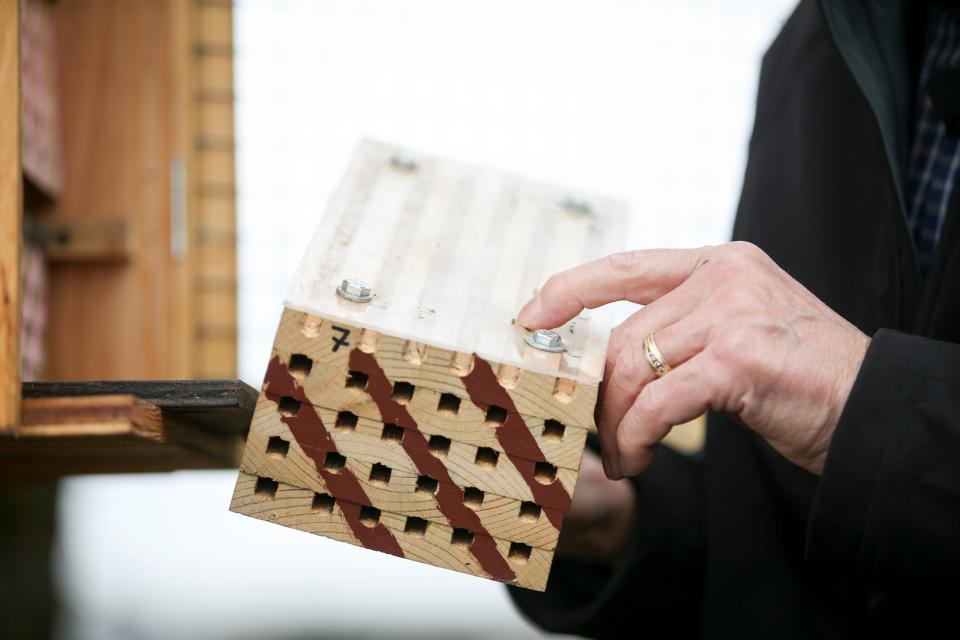
Circle of life
Female bees will lay their eggs each spring in the chambers they’ve built, spaced evenly throughout the narrow tunnel. Those eggs will hatch into larvae; the larvae will build cocoons; the bees will grow in the warmth and safety of those cocoons and finally emerge as adult bees the following spring, once temperatures reach 55 degrees.
While the bees hibernate in their cocoons, Paisley will collect them, clean their homes, make sure the conditions are just right for when they emerge. He’s a both a benevolent caretaker and a housekeeper of sorts.
Once emerged, the mason bees will pollinate, mate, re-build their homes, lay more eggs, and die. The cycle of life begins anew.
These bees live in relative isolation. They will not travel too far past the safety of their man-made house or the provisions of the artificial garden on which it rests.
Still, each plant they pollinate is a win for the natural world.
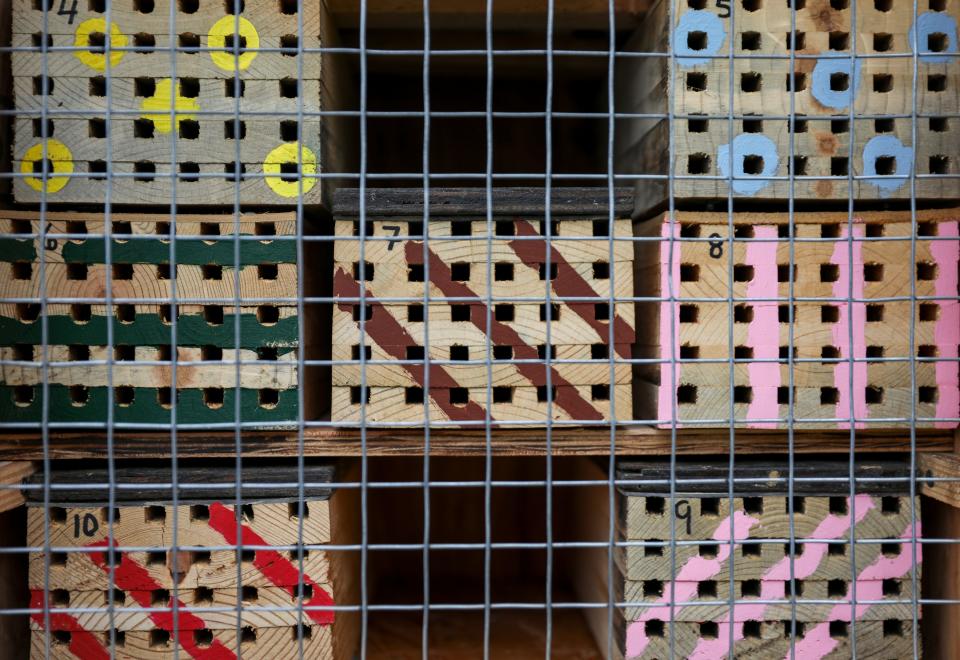
Between Willamette Valley Vineyards’ four properties, Paisley caretakes close to 10,000 bees. He only needs about 4,000 of them to maintain the vineyard’s own populations. So he has roughly 6,000 cocoons to give away each year to anyone who wants them: gardeners, other farmers, bee enthusiasts like Paisley. They’re great for fruit trees, Paisley said.
“One of the farmers up the hill… said his cherry crop was phenomenally increased the year after the mason bees were there,” Paisley said.
And in each of those places, the bees will pollinate, and life will flourish.
In other words: these bees are isolated, but their impact is far-reaching.
But even if it wasn’t, Paisley said – even if they had little or no ecological impact – he would still love them.
“Mason bees, they’re just cool,” Paisley said. “The Creator made these bees. It’s just a work of love.”
Shannon Sollitt is a corps member of Report for America, a program that aims to support local journalism and democracy by reporting on under-covered issues and communities. Send tips, questions and comments to ssollitt@statesmanjournal.com
This article originally appeared on Salem Statesman Journal: Willamette Valley Vineyards is buzzing with bees

